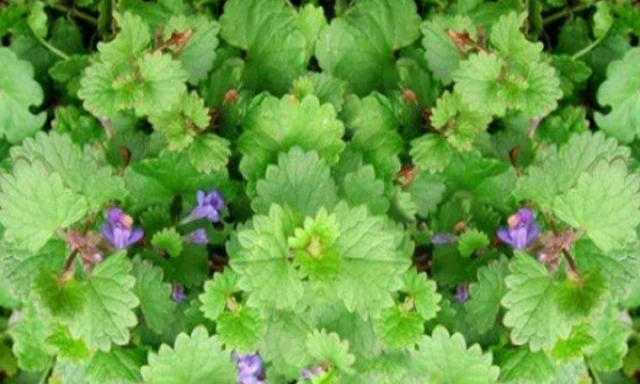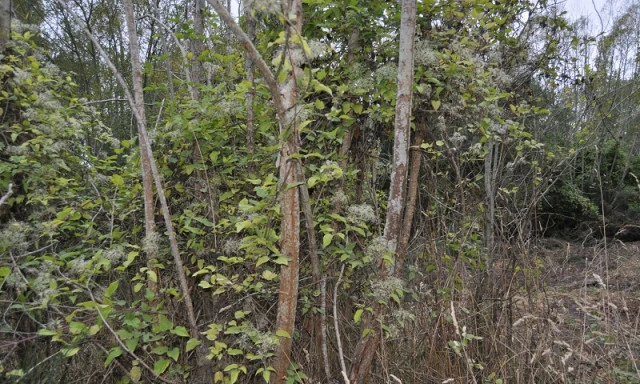Agapanthus may look attractive, but once they take over, they become one of the toughest weeds to remove in NZ. Their deep, stubborn roots make digging a back-breaking task, and even the smallest piece left in the ground can grow right back. If you’re searching for how to kill agapanthus effectively, and stop the regrowth, we’ve got the answer. With Weed Weapon and our easy 1-2-3 Agapanthus Removal Programme, you can finally reclaim your garden without hours of exhausting manual labour.
Why are they so difficult to get rid of?
Agapanthus have waxy, shiny leaves that tend to make products like herbicides/weed killers slide off before they have a chance to work properly, regardless of the brand (but we have a solution for that). And digging them out is by no means and easy option either. There’s a reason they get so much hatred on TikTok and landscapers start squirming when asked to quote on digging them out. It’s seriously tough work and it’s not always successful. Their thick clumps of tough, fleshy leaves make it hard to even reach the roots. And once you do, digging them out is a real challenge because their thick root balls and rhizomes grow deep, are tightly packed and very heavy. Worst of all if you leave a small piece of a rhizome/root behind, it will shoot and grow back.
While it might take time, it is still possible to get rid of agapanthus, without breaking your back or losing your sanity.
1-2-3 Step Guide to Agapanthus Removal
- Step 1 - Treat
Option 1 Spray
Spray Weed Weapon Extra Strength or Weed Weapon Rapid Action onto the agapanthus. Ensure all parts of each plant and all plants in the colony are sprayed thoroughly. If using the Weed Weapon Extra Strength Concentrate we recommend mixing it with Kiwicare Dye & Stick. It helps herbicide stick to the plant, so that it has time to work. It also shows where you have sprayed so you can ensure that you haven’t missed any spots (accidentally allowing any rhizomes to survive and sprout).
NOTE: Weed Weapon Extra Strength and Weed Weapon Rapid Action ready to use spray bottles should not be mixed with Dye & Stick just use them as they are. However, be sure to read instructions on pack carefully and take into consideration the weather, shade coverage and how thoroughly you spray the plant colony.
Option 2 Cut & Paint
Cut down the agapanthus plants and immediately paint the stump with a thick layer of Weed Weapon Invade Gel. You must treat the stump immediately, so that the sap in the leaves and stalks can absorb the Weed Weapon Invade Gel into the plant while still wet. If you wait before treatment, the cut areas will form a seal as the sap dries making it difficult for the Weed Weapon Invade Gel to be absorbed.
NOTE: Cut the leaves and stalks down low leaving a stump for you to treat but leave enough length that you can trim and re-treat the plant another three times over the following months.
- Step 2 - Treat again
Option 1 Mix & Spray
Follow the instructions outlined in Step 1 four times over the course of spring and early summer. The repeated treatments help to ensure product is absorbed into all of the rhizomes/root systems so that the whole colony dies off and does not keep sprouting. It's a great way of ensuring no rhizomes are left alive to regrow, if you miss them in round one of treatment, you'll likely catch them in round two etc.
Option 2 Cut & Paint
We recommend trimming back and re-treating the stump four times over the spring/early summer period to ensure the product is absorbed into all the rhizomes/roots.
As time goes on, and treatments increase you should start to notice a marked change in the appearance of the plants as the colony dies off.
Top Tip
Keep an eye out for any regrowth or shoots and treat immediately if spotted to stop new rhizomes from establishing.
- Step 3 - Dig out once dead
In late summer the agapanthus plants should appear visibly withered and dead. When completely dead they should be relatively easy to dig out and remove as the rhizomes would have withered and died as well. Remove the crowns of the plant and rake out any remaining roots. The area is now suitable for replanting, although given the density and depth of the plants removed, you may wish to fill in any holes with topsoil.
Best Time of Year to Remove Agapanthus
The best time to treat agapanthus with weed killer is in spring and early summer when they are actively growing. During times of active growth, they absorb weed killers faster through the leaves and down to the rhizome/root system making the weed killer more effective.
If you’re reading this and its already November or December it’s not the end of the world, you can condense the timeline and treat four times over the space of one, two or even three months.
If you need to treat in summer and early autumn plant growth will have started to slow. So, you may need to treat more regularly and at closer intervals. Aim to treat every two weeks and monitor from there. If you need to add on one or two more treatments, then do so.
Why Use Dye & Stick?
You might be wondering why we recommend mixing Dye & Stick with Weed Weapon Extra Strength concentrate when it is already proven to kill agapanthus. The answer comes down to reliability and control. These herbicides work extremely well when used correctly and in the right weather conditions — but agapanthus is a tough, waxy-leaved weed, and anything that boosts performance is worth having on your side.
Kiwicare Dye & Stick is a specialist additive designed to be mixed with your herbicide spray. It improves coverage by helping the spray spread and stick to those slippery leaves, increasing the amount of product the plant actually absorbs. It also includes a temporary dye, making it easy to see exactly where you’ve sprayed so you don’t miss spots or double-treat areas.
When you’re declaring war on agapanthus, Dye & Stick gives your weed killer the extra edge it needs to get the job done right.
Why don’t you mix Dye & Stick with ready to use sprays (i.e. not concentrates)?
The answer is simple, they’re already mixed up and ready to go. If you were to add Dye & Stick to a ready to use spray it would significantly dilute it, making it less effective.
In summary it can be done, it just takes time
Getting rid of agapanthus takes persistence, but with the right Weed Weapon approach and products, you can win the battle without breaking your back or losing your sanity. Follow the 1-2-3 steps, treat thoroughly, and treat any regrowth immediately to stop it re-establishing and getting out of control. With a little patience and the right tools, you’ll soon be d free from agapanthus for good.


